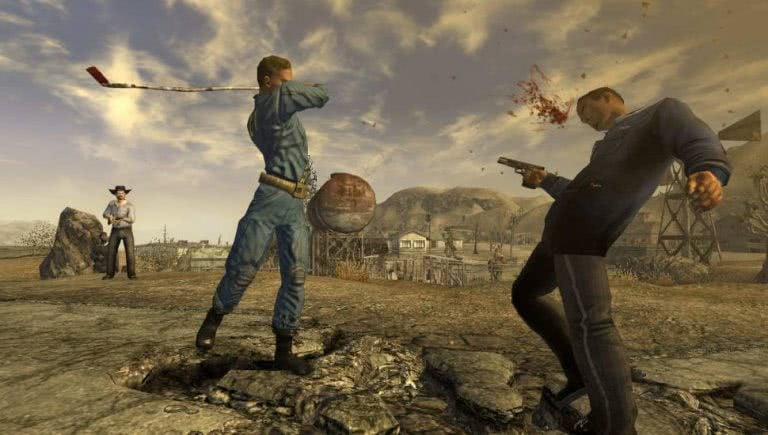As Fallout: New Vegas turns 10, let’s look back at why Obsidian’s brilliant entry is arguably the franchise’s high point.
Let me get something off my chest right off the bat: Fallout: New Vegas looked like crap when it was released and it looks even crappier 10 years on.
The brown and grey aesthetic was already boring even by 2010 standards, and game had more annoying bugs than the Amazon Rainforest.
Yet despite the raft of technical problems, these can be easily overlooked as New Vegas remains one of, if not the best Fallout game thanks to the unparalleled writing and design by Obsidian, the game’s developer.
The quality of New Vegas’ rock solid writing and design was encapsulated by two standout things that made the game so good: the tone and it’s quest lines.
When Bethesda bought the Fallout IP and started making its own games starting with Fallout 3, there was a distinct tonal difference in those games compared to the first two installments of the series, which were developed by the talented team at the now defunct Interplay studio, several of whom ultimately formed Obsidian.
The original Interplay/Obsidian Fallout games focused more on civilisation dealing with the aftermath of a nuclear apocalypse while the Bethesda titles focused more on the rebuilding of society after said nuclear apocalypse.
Love Film & TV?
Get your daily dose of everything happening in music, film and TV in Australia and abroad.
New Vegas however captured the best of both worlds.
Happy 10th Birthday to Fallout: New Vegas. 🎉 pic.twitter.com/KbWdXQ9UYA
— Fallout (@Fallout) October 19, 2020
The complex narrative explored the uneasy relationships between several factions trying to survive in the wasteland while also diving deep into the societal consequences if the delicate power balance between said factions is disturbed.
And then there are the quests. Hoo boy the quests.
Coming in at over 250 quests, it may seem like New Vegas was stuffed with filler. Yet it honestly felt like each quest or mission, no matter how big or small, was painstakingly crafted to reward the player in some way, whether it was with a joke, an emotional pay-off, or just sheer entertainment.
The level of craft put into New Vegas‘s quests in terms of the story points, dialogue, and player choices was so good that you forget that every quest is essentially a “fetch quest” – a task in which players must acquire some special item in order to progress.
It may not seem like it at the time, but the sheer depth and quality of New Vegas‘ quests inadvertently influenced the approach taken for the next generation of RPGs.
Take a look at The Witcher 3: The Wild Hunt. Not only is it an RPG stuffed to the brim with quests, both epic and small, every single one was compelling in a way that subverted expectations for what players initially expected from simple “fetch quests.” Stepping back, it’s easy to see how New Vegas‘ fingerprints are all over Witcher 3.
10 years may have gone by yet New Vegas still holds a special place in the hearts of many Fallout fans, so much so that a talented bunch decided to use the game engine used for 2015’s Fallout 4 to craft an unofficial remake of the entire game called Fallout 4: New Vegas.
With Microsoft dropping a dump truck worth of bottle caps cash to buy Bethesda and its parent company ZeniMax, that means every studio that has had a hand in developing every previous main entry Fallout game are now under the one roof.
Not saying that this means a New Vegas follow up developed by Obsidian is a sure thing, but it’ll be incredibly fascinating to see what the next Fallout game will look like.

































